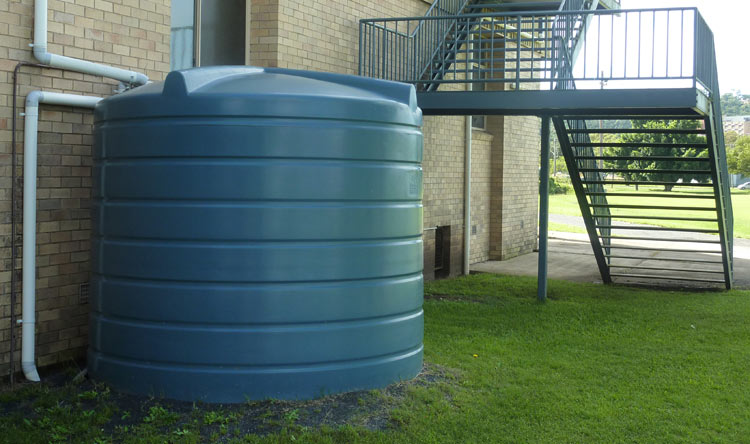In the realm of water storage solutions, the introduction of 6-layer water tanks has revolutionized the landscape, setting new standards for durability, efficiency, and safety. These tanks are not just containers for holding water; they represent a technological leap in design and construction. In this exploration, we delve into the intricacies of the technology behind 6-layer water tanks, unraveling the engineering marvels that make them the epitome of excellence.
1. Understanding the Essence of 6-Layer Water Tanks
At their core, 6-layer water tanks are engineered for robustness, combining multiple layers to create a fortified structure. Unlike traditional water tanks with fewer layers, the 6-layer design is a testament to the commitment to quality and performance. Each layer serves a distinct purpose, contributing to the overall strength and functionality of the tank.
2. Layer 1: Outer UV Protection
The outermost layer of a 6-layer water tank acts as a shield against the relentless impact of ultraviolet (UV) rays. This layer is crucial for preventing degradation of the tank’s structural integrity due to prolonged exposure to sunlight. Composed of UV-resistant materials, this protective barrier ensures that the tank retains its aesthetic appeal while reinforcing its resilience against environmental elements.
3. Layer 2: Outer White Layer
Beneath the UV protection layer lies an outer white layer, designed for both functionality and aesthetics. Beyond contributing to the tank’s visual appeal, the white color serves a practical purpose. It reflects sunlight, reducing heat absorption and minimizing the impact of temperature fluctuations on the stored water. This layer acts as a thermal barrier, helping to maintain the water temperature within an optimal range.
4. Layer 3: Insulation Layer
The third layer in the 6-layer design is dedicated to insulation. This component is crucial for mitigating the effects of external temperature variations on the water inside the tank. The insulation layer minimizes heat transfer, preventing the water from reaching undesirable temperatures, especially in regions with extreme climate conditions.
5. Layer 4: Middle Black Layer
The fourth layer, often black in color, serves a dual purpose. On one hand, the black color absorbs sunlight, aiding in the prevention of algae growth within the tank. On the other hand, this layer contributes to the overall structural strength of the tank, enhancing its ability to withstand external pressures and stresses.
6. Layer 5: Inner White Layer
Beneath the black layer lies the inner white layer, mirroring the functionality of its outer counterpart. This layer plays a crucial role in maintaining water quality. Similar to the outer white layer, it reflects sunlight, reducing heat absorption and helping to keep the water cool. Additionally, the white color prevents the transmission of harmful UV rays into the stored water, ensuring its purity.
7. Layer 6: Innermost Layer – Food-Grade Material
The innermost layer, the heart of the tank, is composed of food-grade material. This layer directly interacts with the stored water, ensuring that it remains uncontaminated and safe for consumption. The use of high-quality, non-toxic materials underscores the commitment to water hygiene and user well-being.
8. Robust Construction: The Key to Longevity
The synergy of these six layers creates a water tank with unparalleled strength and durability, ensuring its prolonged lifespan. The outer layers provide protection against external elements, while the inner layers focus on maintaining water quality. The use of UV-resistant materials, coupled with insulation and thermal regulation, contributes to the tank’s longevity and efficient performance.
9. Advantages of 6-Layer Water Tanks
The technological intricacies of 6-layer water tanks translate into a myriad of advantages for consumers:
Durability: The layered construction enhances the tank’s resistance to physical and environmental stressors, ensuring a prolonged lifespan.
Water Quality: The use of food-grade materials and UV-resistant layers preserves the purity and freshness of the stored water.
Temperature Control: The insulation and reflective layers contribute to temperature regulation, preventing water from becoming excessively warm, especially in sunny climates.
Aesthetic Appeal: The outer layers, including UV protection and the outer white layer, maintain the tank’s visual appeal by preventing discoloration and deterioration.
10. Environmentally Conscious Design
In an era where environmental consciousness is paramount, the design of 6-layer water tanks reflects a commitment to sustainability. The tanks’ longevity and resistance to wear reduce the need for frequency of replacements, minimizing the environmental impact associated with the production and disposal of water storage solutions.
Conclusion:
The technology behind 6-layer water tanks represents a triumph in the field of water storage solutions. As consumers increasingly prioritize quality, durability, and environmental responsibility, these tanks stand as a beacon of innovation. The intricate layering, thoughtful material selection, and commitment to water purity make 6-layer water tanks a reliable and technologically advanced choice for those seeking the best in water storage. In a world where water is a precious resource, investing in the technology behind 6-layer water tanks is an investment in a sustainable and efficient water storage solution.



